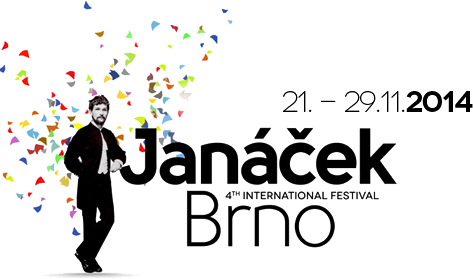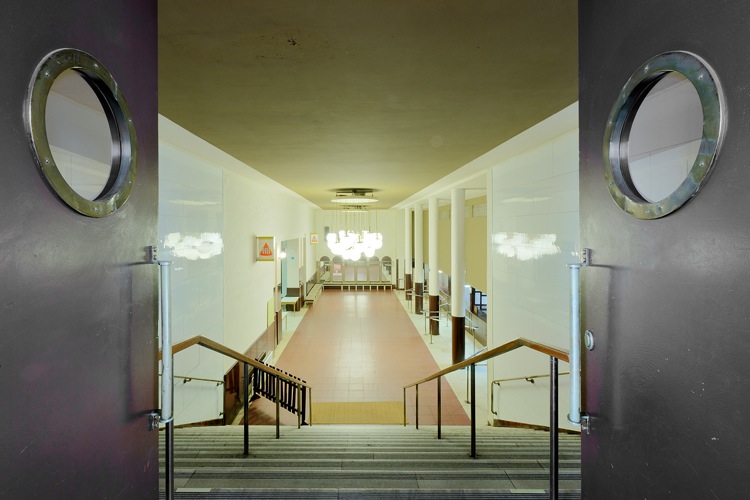Orchestra of the Janáček Opera of the Brno National Theatre
Chorus of the Janáček Opera of the Brno National Theatre
Brno Philharmonic Chorus of the Brno Beseda
LEOŠ JANÁČEK (1854–1928)
The Eternal Gospel
Con moto
Adagio
Con moto
Andante
LEOŠ JANÁČEK (1854–1928)
Glagolitic Mass
September 1927 version – editor Jiří Zahrádka
Intrada
Introduction
Lord have mercy
Glory to God
I believe
Holy, holy
Lamb of God
Organ solo
Intrada
Jaroslav Kyzlink – conductor
Josef Pančík – choirmaster
Petr Kolař – organ
Maria Kobielska – soprano
Magdalena Kožená – alto
Michal Lehotský – tenor
Gustáv Beláček – bass
Lenka Koplová – solo violin
It’s the fifth of December 1927, and in the hall of the Brno Stadion the premiere of perhaps the 20th century’s most important spiritual composition, Janáček’s Glagolitic Mass, is taking place. The composer had begun work on it in 1920, but he soon abandoned the composition and did not return to the piece until 1926. The new impetus was a meeting with the Archbishop of Olomouc, Dr Leopold Prečan, at the unveiling of a memorial plaque on the house in Hukvaldy where Janáček had been born. During this ceremonial event, the Archbishop had loyally stood beside the Maestro in spite of the extremely bad weather. Then, in August of the same year, Janáček more or less wrote the whole of the mass over a period of three weeks in Luhačovice.
The Philharmonic Society of the Brno Beseda expressed an interest in giving the first performance of the Glagolitic Mass when they discussed the programme for the subscription and regular concerts at a committee meeting on 21 December 1926, adding Janáček’s new work to the programme for the fourth regular concert under the title of “Missa solemnis”.
The rehearsals culminated in the second half of November, with the final rehearsal being held on the morning of Sunday 4 December 1927 in the hall of the exhibition pavilion at the Brno Stadion. This multifunctional hall had been built as recently as 1924 and had a large stage. Shortly after it opened, the Brno Conservatory furnished it with a large organ made by Wilhelm Sauer in 1885, which had originally been housed in the concert hall of Prague’s Rudolfinum.
In certain passages of the Glagolitic Mass Janáček had originally included pedal timpani, so the Brno Beseda had to borrow timpani for the concert from the Brno National Theatre, the Conservatory and the Orchestral Association. The concert at which Janáček’s new Missa glagolskaja was performed was held at the Stadion on 5 December 1927 at 8pm. Taking part were Alexandra Čvanová, Marie Hloušková, Stanislav Tauber and Ladislav Němeček, the organist Bohumil Holub, the 140-strong chorus of the Brno Beseda and the National Theatre Orchestra conducted by Jaroslav Kvapil. Jaroslav Křička’s cantata Temptation in the Wilderness was performed in the first part of the concert. Archbishop Leopold Prečan, who had essentially initiated the work and to whom Janáček dedicated the piece in April 1928, was also invited to the event. However, he excused himself due to illness, as did other representatives of the Catholic Church. The concert, which was also broadcast on radio, was a great success, as is testified by a critic of the time, who referred to the idiosyncratic working of the mass’s text, which Janáček “approached entirely in his own way: simply without tradition, or even against tradition”. From the reviews it is clear that the composition made a very strong impression. After this concert, Janáček significantly modified the Glagolitic Mass. At the premiere an Intrada was also played before the Introduction (however, it was not Janáček himself who initiated this change). The Introduction was written in a single multi-metre layer of groups of sevenths, while in the movement Lord have mercy Janáček used a quintuple metre. The movement I believe underwent the biggest changes, with the middle section being reworked and the areas with pedal timpani deleted. In addition, Janáček also carried out dozens of other smaller revisions to the instrumentation as well as to the choral elements throughout the score. Today we will be able to hear the work as it sounded at that first performance on 5 December 1927.
Janáček’s spiritual cantata The Eternal Gospel from 1914 was based on a text by his contemporary and, to a degree, spiritual kindred spirit, the poet Jaroslav Vrchlický. The story, written in verse, was called The Eternal Gospel – Legend 1240 from the collection Frescoes and Tapestries published in 1891. It was inspired by the teachings of the medieval monk Joachim of Fiore (1132–1202), whose interpretation of history culminates with the period of the Holy Spirit, or the love of all humanity towards every creature. It is quite symbolic that Janáček set this prophecy to music just before the outbreak of World War I. We do not know exactly when the composition was written, but the first evidence of the existence of the completed work comes from May 1914, when the editor Artuš Rektorys informed Janáček of his discussions with Otakar Ostrčil concerning the performance of the work and recommended that the work be performed by the Hlahol chorus in Prague. In Janáček’s Eternal Gospel the prophecies of Joachim of Fiore are divided into four sections with an emphasis on the tenor part and the chorus. Musically, The Eternal Gospel is closely linked, and not only in terms of instrumentation, with the opera The Excursions of Mr Brouček. The premiere finally took place on 5 February 1917 in a performance by the Prague choral ensemble Hlahol and the orchestra of the Czech Philharmonic conducted by Jaroslav Křička.
Jiří Zahrádaka







